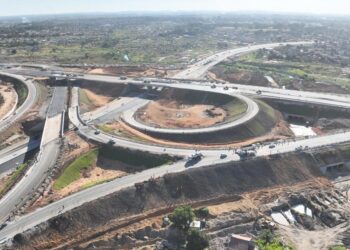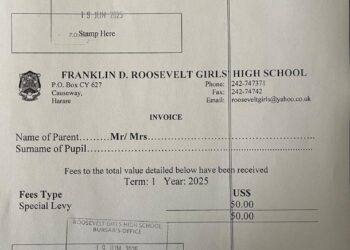Namibia, one of Africa’s driest countries, is facing its worst drought in over 100 years.
With no river running through its territory and 83% of its rainwater evaporating, the country has been compelled to find innovative solutions to ensure a sustainable water supply for its population.
In response to this dire situation, the Goreangab Water Treatment Plant in Windhoek has implemented a groundbreaking method to transform sewer water, including urine and feces, into potable drinking water.
ALSO READ: Chevrons scoops trophy from Namibia at African games in Ghana
This facility stands as a testament to human ingenuity and resilience, showcasing the lengths to which Namibia is willing to go to provide safe drinking water for its people.
The process at the Goreangab Water Treatment Plant begins with the collection of wastewater from various sources across Windhoek.
This wastewater, containing urine and f3ces, is first subjected to preliminary treatment to remove large particles and debris. This initial stage helps to prepare the water for more intensive purification processes.
Following the preliminary treatment, the water undergoes biological treatment. In this stage, bacteria and other microorganisms are introduced to break down the organic matter present in the wastewater. This step is crucial as it significantly reduces the levels of contaminants and prepares the water for further filtration.
Once the biological treatment is complete, the water is passed through a series of filters designed to remove finer particles, including h@rmful pathogens and chemicals. These filters are highly effective, ensuring that even the smallest impurities are eliminated from the water.
The final stage of the process involves advanced purification methods such as reverse osmosis and ultraviolet disinfection. Reverse osmosis is a powerful filtration technique that forces water through a semipermeable membrane, removing any remaining contaminants. Ultraviolet disinfection then uses UV light to destroy any lingering bacteria or viruses, ensuring the water is safe to drink.
The result of this meticulous multi-step process is water that meets international drinking standards, proving to be as clean and safe as water from conventional sources. Namibia’s pioneering approach to wastewater recycling has not only provided a vital solution to its water scarcity but has also attracted global attention.
The Goreangab Water Treatment Plant is now seen as a model for other countries facing similar challenges, demonstrating that innovative thinking can overcome even the most severe environmental obstacles.
The success of the Goreangab Water Treatment Plant has spurred discussions on the importance of water conservation and the need for integrated water management strategies. Namibia’s willingness to embrace unconventional methods and leverage cutting-edge technology highlights the potential of wastewater recycling as a sustainable solution for water-scarce regions worldwide.
While the idea of drinking recycled sewer water might initially seem unappealing, it underscores a critical reality: in the face of climate change and diminishing natural resources, traditional water sources may not be sufficient. Innovative solutions like those implemented in Namibia could become increasingly vital in ensuring global water security.
The story of Namibia’s Goreangab Water Treatment Plant is one of hope, determination, and remarkable ingenuity. It serves as a powerful reminder that even in the harshest conditions, humanity has the capacity to adapt and thrive, turning challenges into opportunities for a more sustainable future.










